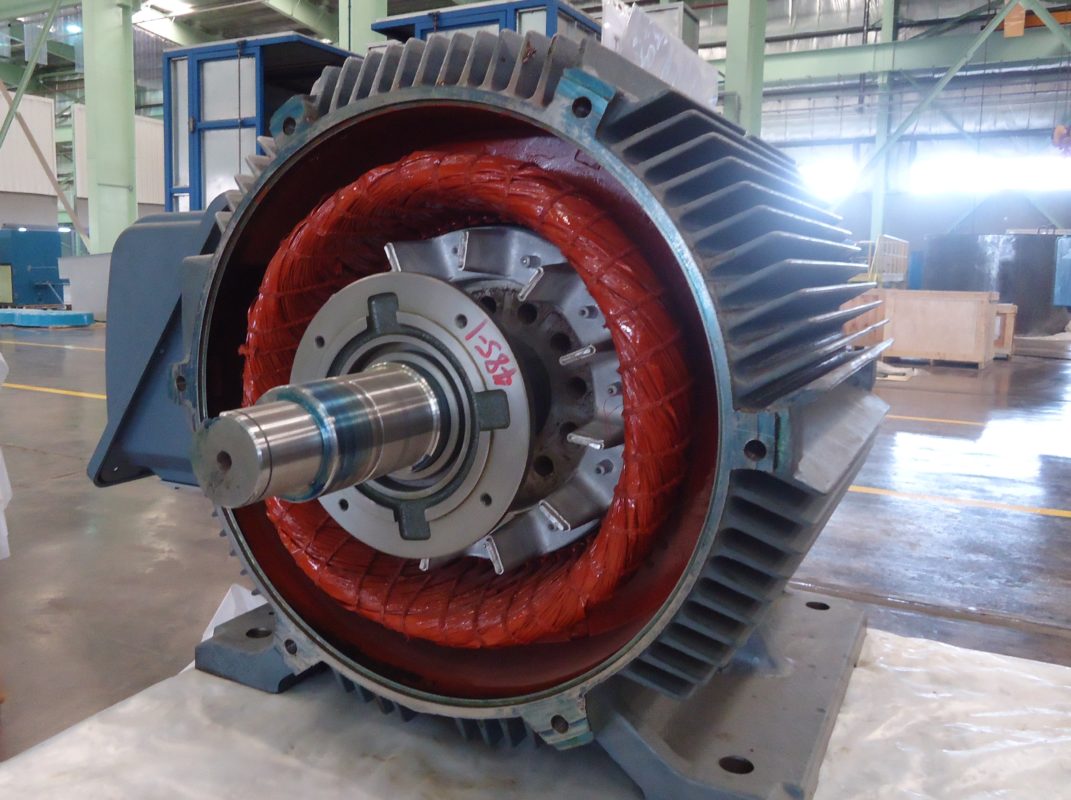What is RMF?
RMF stands for Rotating Magnetic Field and in case of a 3-Phase supply system whenever the 3-phase windings(R/Y/B) are physically displaced by 120 degrees along the periphery and are electrically being fed from a 3 –phase supply which are time-displaced by 120 degrees electrically. Then we have three mmf (Magneto Motive Force) s produced in the air gaps which are stationary alternating along their own axis and the resultant mmf due to those 3 phase individual mmfs rotates with a speed called synchronous speed given by 120????/????. As the resultant mmf wave rotates at 120f/p or synchronous speed, the flux wave due to this mmf also rotates at synchronous speed in the air gap and this type of magnetic field is called Rotating Magnetic Field. In case of 3-Phase Induction motors due to this reason they are called Self-starting motors as the RMF is naturally produced as soon as we provide a 3-Phase supply, which doesn’t happen in case of 1-Phase induction motors and we will discuss it latter that why 1-phase induction motors are not self-starting and how do they rotate.

( 3-Phase currents with 120 Deg. Time displacement )

How does a 3-Phase Induction motor start?
Now we all know what exactly is a RMF or Rotating Magnetic Field so when we provide a 3-phase supply to the induction motor, then a Rotating Magnetic Field is established in the airgap and the rotor bars present on the stationary rotor cut the magnetic flux and we know according to Faraday’s Law whenever there is a relative space or time variation between the magnetic field and the conductor, an emf will be induced in the conductor and here the variation is in terms of space as the stator field is rotating with respect to the stationary rotor bars. As the emf is induced in the rotor bars, which is nothing but the Back EMF and the reason it is known as the Back EMF is because if you apply Fleming’s Right Hand rule to the emf then you will find its direction is opposite to the main EMF. Now the emf is induced in the rotor bars, but no current is flowing in the bars as there is no path provided for them. So we provide two End Rings on both sides of the rotor for shorting all the bars for the flow of current.
Now the current flows due to the emf induced on the rotor bars and this induced current tend to oppose the cause as we know according to Lenz’s Law the induced current always develops a flux which opposes the motion (or the change producing the induced current) as every action causes an equal and opposite reaction. So the current induced will produce a flux and when that flux interacts with the RMF (Rotating magnetic Field) the conductor will experience a Force, which is nothing but the Lorentz’s Force. It says that when the current carrying conductors are placed under the magnetic field, the conductors experience the force. So the rotor now rotates and it tries to catch the Synchronous speed or the speed of the RMF. Because when it reaches the RMF speed or the Synchronous speed, the relative speed between them will become Zero and no further emf will be induced on the rotor and the rotor will stop rotating, this is the reason why the motor rotates at a speed lesser than the Synchronous speed or you can say Slip Speed.
Lenz’s Law:
The Lenz’s law states that the induced current always develops a flux which opposes the motion (or the change producing the induced current) as every action causes an equal and opposite reaction.
Faraday’s Law of Electromagnetic Induction:
Whenever there is a relative space or time variation between the magnetic field and the conductor, an emf will be induced in the conductor and in case of Induction motors the induced emf is of Dynamic Induced EMF.
Lorentz’s Force:
When the current carrying conductors are placed under the magnetic field, the conductors experience the force.

( Current Carrying conductor placed in a Magnetic Field will experience a Force )


